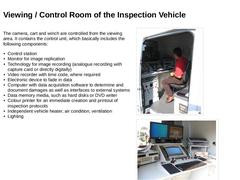
|
The camera, cart and winch are controlled from the viewing area. It contains the control unit, which basically includes the following components: -
Control station
-
Monitor for image replication
-
Technology for image recording (analogue recording with capture card or directly digitally)
-
Video recorder with time code, where required
-
Electronic device to fade in data
-
Computer with data acquisition software to determine and document damages as well …
|
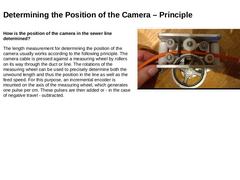
|
How is the position of the camera in the sewer line determined? The length measurement for determining the position of the camera usually works according to the following principle. The camera cable is pressed against a measuring wheel by rollers on its way through the duct or line. The rotations of the measuring wheel can be used to precisely determine both the unwound length and thus the position in the line as well as the feed speed. For this purpose, … |
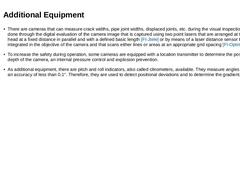
|
-
There are cameras that can measure crack widths, pipe joint widths, displaced joints, etc. during the visual inspection. This is done through the digital evaluation of the camera image that is captured using two point lasers that are arranged at the camera head at a fixed distance in parallel and with a defined basic length [FI-Jtele] or by means of a laser distance sensor that is integrated in the objective of the camera and that scans either lines …
|
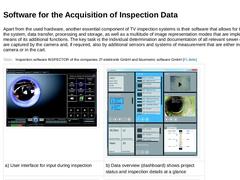
|
Apart from the used hardware, another essential component of TV inspection systems is their software that allows for the control of the system, data transfer, processing and storage, as well as a multitude of image representation modes that are implemented by means of its additional functions. The key task is the individual determination and documentation of all relevant sewer conditions that are captured by the camera and, if required, also by additional … |
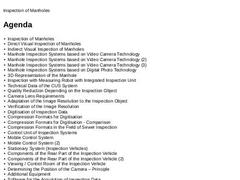
|
|
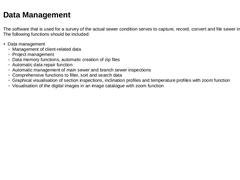
|
The software that is used for a survey of the actual sewer condition serves to capture, record, convert and file sewer inspection data. The following functions should be included: -
Data management
-
Management of client-related data
-
Project management
-
Data memory functions, automatic creation of zip files
-
Automatic data repair function
-
Automatic management of main sewer and branch sewer inspections
-
Comprehensive functions to filter, sort and search …
|
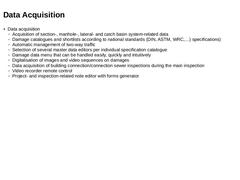
|
-
Data acquisition
-
Acquisition of section-, manhole-, lateral- and catch basin system-related data
-
Damage catalogues and shortlists according to national standards (DIN, ASTM, WRC,…) specifications)
-
Automatic management of two-way traffic
-
Selection of several master data editors per individual specification catalogue
-
Damage data menu that can be handled easily, quickly and intuitively
-
Digitalisation of images and video sequences on damages
-
…
|
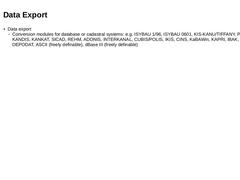
|
-
Data export
-
Conversion modules for database or cadastral systems: e.g. ISYBAU 1/96, ISYBAU 0601, KIS-KANU/TIFFANY, PROKIS, KANDIS, KANKAT, SICAD, REHM, ADONIS, INTERKANAL, CUBIS/POLIS, IKIS, CINS, KaBAWin, KAPRI, IBAK, PoyGIS, VSA, DEPODAT, ASCII (freely definable), dBase III (freely definable)
|
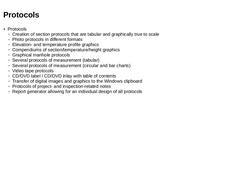
|
-
Protocols
-
Creation of section protocols that are tabular and graphically true to scale
-
Photo protocols in different formats
-
Elevation- and temperature profile graphics
-
Compendiums of section/temperature/height graphics
-
Graphical manhole protocols
-
Several protocols of measurement (tabular)
-
Several protocols of measurement (circular and bar charts)
-
Video tape protocols
-
CD/DVD label / CD/DVD inlay with table of contents
-
Transfer of digital …
|
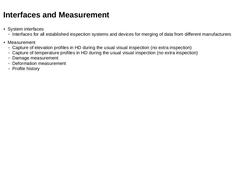
|
-
System interfaces
-
Interfaces for all established inspection systems and devices for merging of data from different manufacturers
-
Measurement
-
Capture of elevation profiles in HD during the usual visual inspection (no extra inspection)
-
Capture of temperature profiles in HD during the usual visual inspection (no extra inspection)
-
Damage measurement
-
Deformation measurement
-
Profile history
|
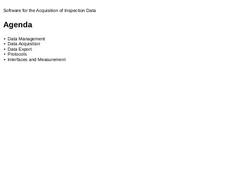
|
|
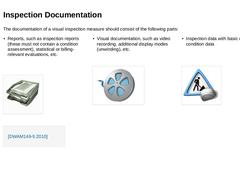
|
The documentation of a visual inspection measure should consist of the following parts: -
Reports, such as inspection reports (these must not contain a condition assessment), static calculation or billing-relevant evaluations, etc.
-
Visual documentation, such as video recording, additional display modes (unwinding), etc.
-
Inspection data with basic data and condition data
(Image: Picto Desk Storage Schreibtisch Ablage Archiv) (Image: Picto Video Film … |
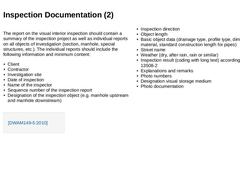
|
The report on the visual interior inspection should contain a summary of the inspection project as well as individual reports on all objects of investigation (section, manhole, special structures, etc.). The individual reports should include the following information and minimum content: -
Client
-
Contractor
-
Investigation site
-
Date of inspection
-
Name of the inspector
-
Sequence number of the inspection report
-
Designation of the inspection object (…
|
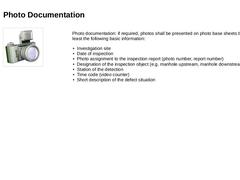
|
(Image: Picto Foto Images Fotoapparat) Photo documentation: if required, photos shall be presented on photo base sheets that include at least the following basic information: -
Investigation site
-
Date of inspection
-
Photo assignment to the inspection report (photo number, report number)
-
Designation of the inspection object (e.g. manhole upstream, manhole downstream)
-
Station of the detection
-
Time code (video counter)
-
Short description of the defect …
|
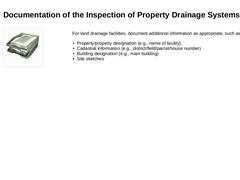
|
(Image: Picto Desk Storage Schreibtisch Ablage Archiv) For land drainage facilities, document additional information as appropriate, such as: -
Property/property designation (e.g., name of facility).
-
Cadastral information (e.g., district/field/parcel/house number)
-
Building designation (e.g., main building)
-
Site sketches
|
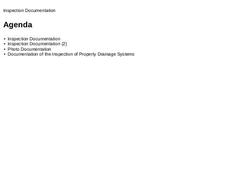
|
|
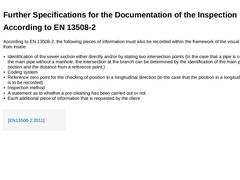
|
According to EN 13508-2, the following pieces of information must also be recorded within the framework of the visual inspection from inside: -
Identification of the sewer section either directly and/or by stating two intersection points (In the case that a pipe is connected to the main pipe without a manhole, the intersection at the branch can be determined by the identification of the main pipe sewer section and the distance from a reference point.)
|
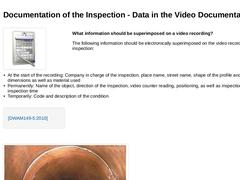
|
What information should be superimposed on a video recording? The following information should be electronically superimposed on the video recording of the inspection: -
At the start of the recording: Company in charge of the inspection, place name, street name, shape of the profile and its dimensions as well as material used
-
Permanently: Name of the object, direction of the inspection, video counter reading, positioning, as well …
|
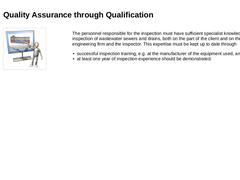
|
(Image: Picto Präsentation) The personnel responsible for the inspection must have sufficient specialist knowledge of the inspection of wastewater sewers and drains, both on the part of the client and on the part of the engineering firm and the inspector. This expertise must be kept up to date through -
successful inspection training, e.g. at the manufacturer of the equipment used, and
-
at least one year of inspection experience should be demonstrated.
|
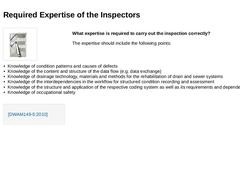
|
What expertise is required to carry out the inspection correctly? The expertise should include the following points: -
Knowledge of condition patterns and causes of defects
-
Knowledge of the content and structure of the data flow (e.g. data exchange)
-
Knowledge of drainage technology, materials and methods for the rehabilitation of drain and sewer systems
-
Knowledge of the interdependencies in the workflow for structured condition …
|

|
(Image: Picto Beratung) During preparation, monitoring and assessment, the client of an inspection measure is responsible for ensuring that all necessary preparations and coordination take place and that the inspector is provided with a proper information and data basis. When When awarding a contract, care must be taken to ensure that the quality requirements for the services to be awarded are described precisely and in detail and can … |
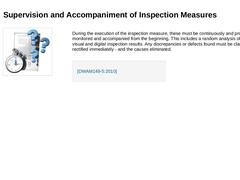
|
During the execution of the inspection measure, these must be continuously and professionally monitored and accompanied from the beginning. This includes a random analysis of the entire visual and digital inspection results. Any discrepancies or defects found must be clarified and rectified immediately - and the causes eliminated. |
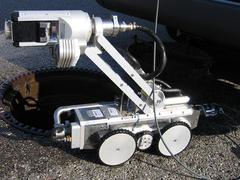
|
This module provides a comprehensive overview of direct and indirect optical inspection methods like CCTV for qualitative condition assessment of pipelines and sewers as well as manholes. In terms of content, the module thus belongs to the topic block "INVESTIGATION", the first of the four basic activities within the framework of integral urban drainage management according to EN 752. The optical inspection procedures presented here provide an essential basis for assessing the performance of the drain and sewer system or for developing the rehabilitation plan. After completing this module, you will have a sound knowledge of: - Inspection object requirements;
- Compilation of necessary equipment for direct optical inspection;
- Investigations in extended recording of defect extent;
- Procedures and methods of indirect inspection and
- Its fields of application and limitations;
- As well as requirements for data management, data acquisition, data export and recording with sewer acquisition software.
|
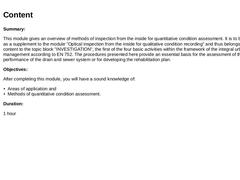
|
Summary: This module gives an overview of methods of inspection from the inside for quantitative condition assessment. It is to be understood as a supplement to the module "Optical inspection from the inside for qualitative condition recording" and thus belongs in terms of content to the topic block "INVESTIGATION", the first of the four basic activities within the framework of the integral urban drainage management according to EN 752. The procedures … |
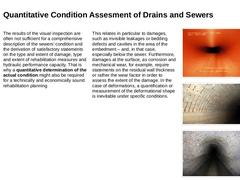
|
The results of the visual inspection are often not sufficient for a comprehensive description of the sewers’ condition and the derivation of satisfactory statements on the type and extent of damage, type and extent of rehabilitation measures and hydraulic performance capacity. That is why a quantitative determination of the actual condition might also be required for a technically and economically sound rehabilitation planning This relates in particular … |